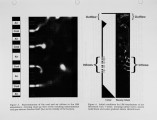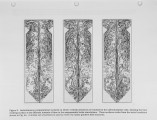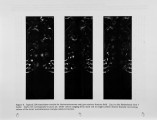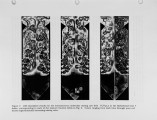| OCR Text |
Show header pressure. As can be seen in Fig. 11a there is a relatively small effect of the injection elevation of the NOx emissions performance predicted by the modeling. with higher elevations producing slightly better NOx removal. However, as expected from Figs. 8-10, there is a large effect in Fig. lib of the injection elevation on 00 emissions, which are seen to remain low when gas is injected at 704-ft and 714-ft, but rise dramatically when the gas heat input level at 772-ft approaches 7%. As noted above, these results include only emissions from incomplete reduction of C O by the relatively low excess 0 2 level in the furnace gases, and do not include any additional emissions that may result from incomplete burnout of C O due the coal combustion process itself. This will become important in the discussion below. Based on results of this type, it was decided that gas should not be injected at the higher elevation, and that the 714-ft elevation represented the best compromise between high NOx removal and low increases in C O emissions. 4.4 Gas injection system design Further modeling was conducted to determine the optimal number and sizing of gas injectors at this elevation, and the optimal layout for the injectors based on the simulations. LIM simulations of the type in Fig. 12 were conducted to examine the effect of gas injection at various locations around the boiler at the 714-ft elevation. This figure shows the gas penetration and mixing in a two-dimensional section through the boiler at a fixed elevation. Of key interest is the interaction of the injected gas with the tangential swirl flow in the boiler, and the effect that this has on gas placement and mixing with regard to reburn. As noted in §4.2, an objective of the system design was to avoid putting gas near the boiler walls, and allow gas mixing in the core of the boiler where oxygen concentrations are low and NOx concentrations are high. Modeling was then conducted to determine the effect of the number and size of injectors on the NOx and CO emissions performance of the FLGR system. These considered the effect of between two and ten injectors at the single 714-ft injection elevation, sized to give up to 1 0 % gas heat input when operating at sonic velocity from a 35 psig gas header. Based on the results, use of eight gas injectors was recommended, and a preferred layout for the gas injectors was developed. Angling of gas injectors was not deemed necessary based on the modeling results. 4.5 Predicted FLGR system performance Based on the modeling results, the FLGR system designed as summarized above was predicted to give 4 7 % NOx reduction relative to a 0.45 lb/MMBtu baseline at 7 % gas heat input under full load (140 M W ) conditions when boiler 02is trimmed to 2.1%. At 90 M W load, the NOx reduction was predicted to rise slightly, consistent with previous field experience with FLGR systems, to just over 50%. CO emissions from incomplete reaction of the injected gas were predicted to remain below 200 ppm at full load, and were predicted to drop at lower load conditions. 5. FLGR SYSTEM PERFORMANCE TESTING 5.1 Initial performance test results Initial testing of the FLGR system evaluated the performance when introducing up to 7 % gas heat input through various combinations of the eight gas injectors installed at |




























